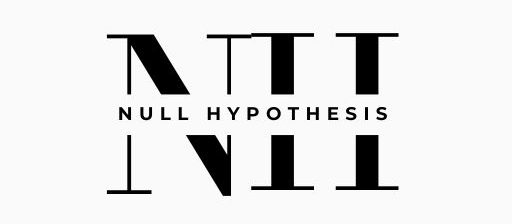FeelPic/iStock via Getty Images Bạn đang xem: Oakmark U.S. Equity Market Q4 2024 Commentary
Oakmark Fund – Investor Class: Average Annual Total Returns (12/31/2024)
| Since Inception (08/05/1991) | 12.82% |
| 10–year | 11.77% |
| 5–year | 14.79% |
| 1–year | 16.02% |
| 3–month | 2.04% |
|
Expense Ratio: 0.91% Expense ratios are from the Fund’s most recent prospectus dated January 28, 2024, as amended and restated July 1, 2024; actual expenses may vary. Past performance is no guarantee of future results. The performance data quoted represents past performance. Current performance may be lower or higher than the performance data quoted. The investment return and principal value vary so that an investor’s shares when redeemed may be worth more or less than the original cost. To obtain the most recent month- end performance data, visit Oakmark.com. |
Back in 2000, we had a problem at Oakmark. Well, actually, we had several. Our portfolio of traditional businesses was badly lagging behind the S&P 500 (SP500, SPX) , which was being led by internet-related and large-cap stocks that we didn’t own. We also had a new portfolio manager (me) and we were getting pummeled by redemptions as performance- chasing investors were decreasing value exposure in favor of growth stocks because that’s what was “working.” But our immediate problem was that Oakmark’s Morningstar style box designation just changed from “Large Value” to “Mid Value.” This was the last straw for some investors who had made the difficult decision to stay with an underperforming fund. They asked, “Why are you changing your style now?” This was especially frustrating to us as we weren’t doing anything differently—even the stocks in our portfolio had hardly changed!
What we found was that many of our large-cap stocks had been recategorized as mid-cap because the increase in market cap of large-cap growth and tech stocks had crowded out our companies. We needed to explain to shareholders that it was the market that had changed, not us, so I titled a section of our September 30, 2000 shareholder report,“Oakmark, A Large Company Fund.” What I wrote almost 25 years ago still explains how we manage the portfolio today:
Oakmark—A Large Company Fund
When investors categorize equity mutual funds, they generally look at two criteria: investment style and the size of the companies being purchased. For investment style growth — or value —The Oakmark Fund is clearly a value fund. All our energy goes into identifying and buying inexpensive stocks, selling them when they are no longer inexpensive, and then repeating the process. To categorize us based on the size of companies we purchase is more difficult. Since larger companies tend to have longer operating histories and more predictable earnings streams, they tend to be less risky investments. Therefore, many investors prefer mutual funds that focus on larger companies, as we do in The Oakmark Fund.
We believe The Oakmark Fund has always invested primarily in large companies. That’s because when we think of large, we think of fundamental characteristics that measure the size of underlying businesses. Using measures like sales, net income or shareholders’ equity, most of our investments have been and still are in stocks that are among the 250 largest businesses in the United States. But most organizations that categorize mutual funds look instead at how Wall Street values those businesses. For example, Morningstar calls the 250 stocks with the biggest market capitalizations “large cap.” Based on their definition, a “large cap fund” primarily buys stocks that have market capitalizations over $10 billion. Because we own many stocks with market caps below $10 billion, in the last quarter Morningstar moved The Oakmark Fund from the “large cap value” to the “mid cap value” category.
Xem thêm : Israel Approves Six Bitcoin Mutual Funds: Report
This is important because we believe that investors who own funds that are still called “large cap” may not be getting the lower risk level they expect from investing in large companies. Last year, many small companies, mostly technology companies, had such high stock prices that they were categorized as large-cap stocks. By our count, the number of these small- company large-caps was five times as high as it was a decade ago! These stocks have a much higher risk profile than is typically associated with large companies. Avoiding these stocks is what has reduced the average market capitalization of our stock positions. The Oakmark Fund will continue buying stocks in large companies that we believe are priced at bargain levels. We believe this is simply acting rationally in a market that has priced many securities irrationally. And, if that means that, in this environment, our “large company value” fund gets categorized as “mid cap value,” it just shows we are doing our job!
So, why has this again become relevant? We haven’t made the distinction between large-cap stocks and large businesses very often because, for most of the past 24 years, most large businesses were categorized as large-cap stocks. But the large-cap universe is shrinking again, just like it did in 2000. We think Morningstar has a very rational way of defining the large-cap universe. They rank order stocks by market cap starting with the largest. They set the dividing line between large- and mid-cap at 70% of the country’s total market capitalization (leaving the bottom 30% for mid-cap, small-cap and micro-cap). Ten years ago, Morningstar’s large/mid dividing line was $17 billion, and most of the stocks owned in the Oakmark Fund were solidly in the large-cap category. Today, because the giant-cap stocks have garnered so much market capitalization, Morningstar’s large/mid cutoff has increased to $68 billion. So, big businesses that we’ve owned for a long time, like General Motors (the largest auto manufacturer in the U.S.) and AIG Corporation (one of the largest insurance companies), have been bumped out of large- cap and are now considered mid-cap stocks. They are still very large global businesses, but they are now categorized as mid-cap stocks.
The dwindling number of large-cap stocks is forcing fund managers to change how they invest. For example, there are now only 22 stocks that Morningstar calls “Large Growth,” yet the average actively managed mutual fund in the Morningstar “Large Growth” category owns 54 stocks.1 So, those portfolio managers are either buying more mid-cap stocks than they used to or are buying more companies that don’t qualify as growth. And they have little wiggle room to exclude the large growth names they deem less attractive. As other managers are adjusting to this new world, you can take comfort that this is the very issue we addressed back in 2000, so we aren’t changing anything at Oakmark.
In the Oakmark Fund portfolio today, 50 of the 52 holdings meet our definition of large businesses – that is either the company’s sales, earnings before interest and taxes, or shareholders’ equity ranks in the top 250 companies. Thirty-nine have market caps above $25 billion, and only four have market caps under $10 billion. We believe this portfolio gives you the lower risk level typically associated with large-cap funds. But with Morningstar’s large-cap cutoff now at $68 billion, we have only 17 holdings that meet their recent large-cap hurdle. And because we size our holdings based on our view of attractiveness, as opposed to market cap, our large-cap holdings don’t necessarily punch above their weight like they do in competitor portfolios where there is more focus on tracking an index.
So, if you notice that Morningstar has changed Oakmark’s investment style to “Mid Value,” rest assured that we aren’t doing anything differently than we’ve been doing for the past 25 years. We buy big businesses that we think are undervalued and we sell them when we no longer believe they are undervalued. Then we repeat the process. We aren’t changing what we do in response to a changing market. As I said 24 years ago, “It just shows we are doing our job!”
William C. Nygren, CFA
Portfolio Manager
|
1The number of stocks Morningstar calls “Large Growth” is as of 12/31/2024, and is based on stocks listed in the U.S. but does not include ADRs. The average number of holdings for actively managed funds in the Morningstar “Large Growth” category was run on 12/18/24 based on each fund’s most recently disclosed portfolio holdings and represents the median across the peer set. The securities mentioned above comprise the following percentages of the Oakmark Fund’s total net assets as of 12/31/2024: AIG Corporation 2.8% and General Motors 3.2%. Portfolio holdings are subject to change without notice and are not intended as recommendations of individual stocks. As of 12/31/24, none of the securities mentioned above are held in Oakmark Select Fund. Portfolio holdings are subject to change without notice and are not intended as recommendations of individual stocks. To obtain a full list of the most recent quarter-end holdings, please visit our website at www.oakmark.com or call 1-800-OAKMARK (625-6275). The information, data, analyses, and opinions presented herein (including current investment themes, the portfolio managers’ research and investment process, and portfolio characteristics) are for informational purposes only and represent the investments and views of the portfolio managers and Harris Associates L.P. as of the date written and are subject to change and may change based on market and other conditions and without notice. This content is not a recommendation of or an offer to buy or sell a security and is not warranted to be correct, complete or accurate. Certain comments herein are based on current expectations and are considered “forward-looking statements.” These forward looking statements reflect assumptions and analyses made by the portfolio managers and Harris Associates L.P. based on their experience and perception of historical trends, current conditions, expected future developments, and other factors they believe are relevant. Actual future results are subject to a number of investment and other risks and may prove to be different from expectations. Readers are cautioned not to place undue reliance on the forward-looking statements. Xem thêm : Fund sales climb, assets surge in November: IFIC This material is not intended to be a recommendation or investment advice, does not constitute a solicitation to buy, sell or hold a security or an investment strategy, and is not provided in a fiduciary capacity. The information provided does not take into account the specific objectives or circumstances of any particular investor, or suggest any specific course of action. Investment decisions should be made based on an investor’s objectives and circumstances and in consultation with his or her financial professionals. The S&P 500 Total Return Index is a float-adjusted, capitalization-weighted index of 500 U.S. large- capitalization stocks representing all major industries. It is a widely recognized index of broad, U.S. equity market performance. Returns reflect the reinvestment of dividends. This index is unmanaged and investors cannot invest directly in this index. The Oakmark Fund’s portfolios tend to be invested in a relatively small number of stocks. As a result, the appreciation or depreciation of any one security held by the Fund will have a greater impact on the Fund’s net asset value than it would if the Fund invested in a larger number of securities. Although that strategy has the potential to generate attractive returns over time, it also increases the Fund’s volatility. Investing in value stocks presents the risk that value stocks may fall out of favor with investors and underperform growth stocks during given periods. All information provided is as of 12/31/2024 unless otherwise specified. Before investing in any Oakmark Fund, you should carefully consider the Fund’s investment objectives, risks, management fees and other expenses. This and other important information is contained in a Fund’s prospectus and summary prospectus. Please read the prospectus and summary prospectus carefully before investing. For more information, please visit Oakmark.com or call 1-800-OAKMARK (1-800-625-6275). Natixis Distribution, LLC (Member FINRA | SIPC), a limited purpose broker-dealer and the distributor of various registered investment companies for which advisory services are provided by affiliates of Natixis Investment Managers, is a marketing agent for the Oakmark Funds. Harris Associates Securities L.P., Distributor, Member FINRA. Date of first use: 01/08/2025 QCM-4130WCN-04/25 OPINION PIECE. PLEASE SEE ENDNOTES FOR IMPORTANT DISCLOSURES. Harris Associates | 111 South Wacker Drive, Suite 4600 | Chicago, IL 60606 | 312.646.3600 |
Editor’s Note: The summary bullets for this article were chosen by Seeking Alpha editors.
Nguồn: https://nullhypothesis.cfd
Danh mục: News






